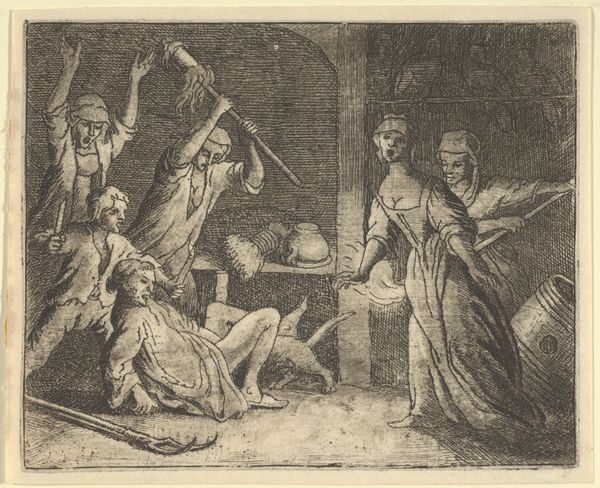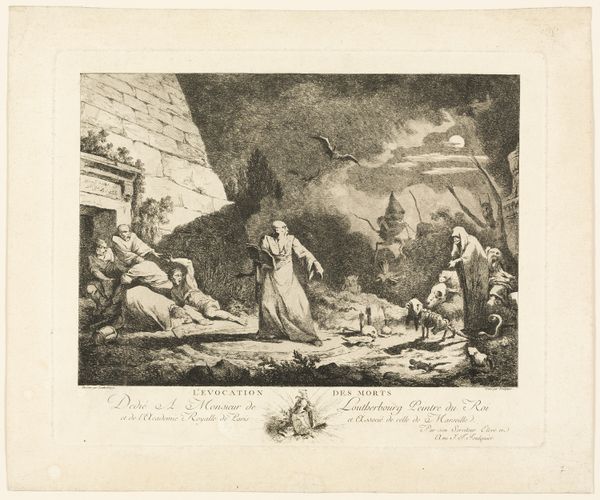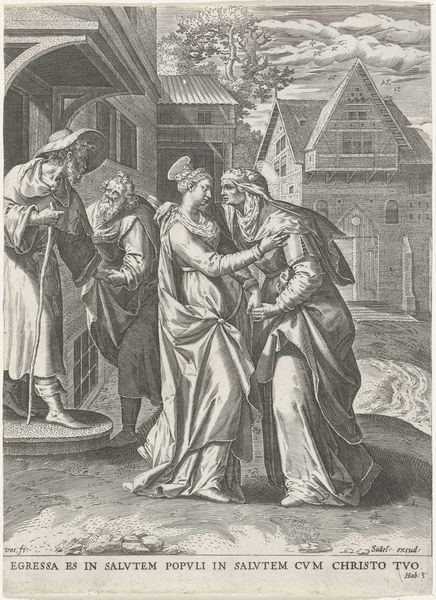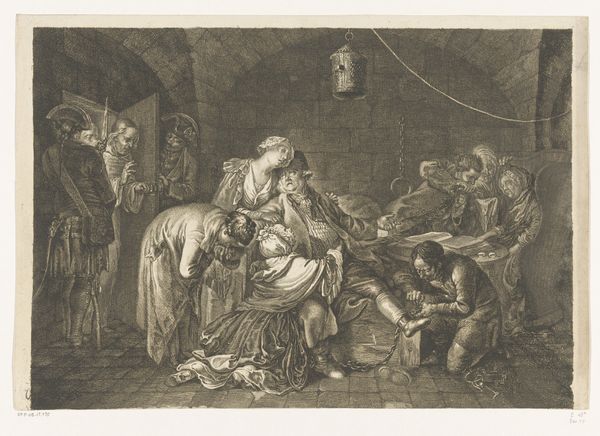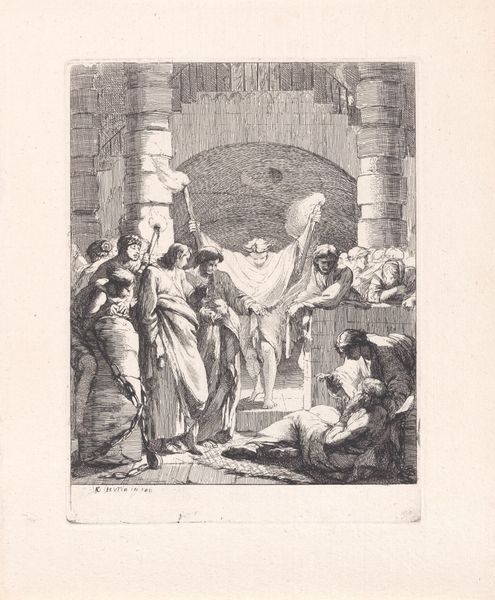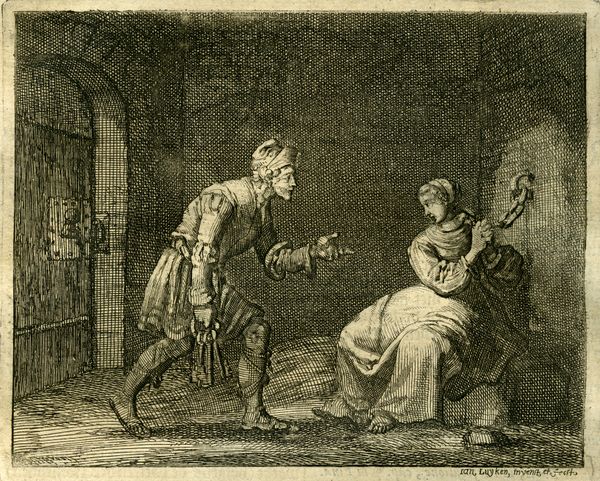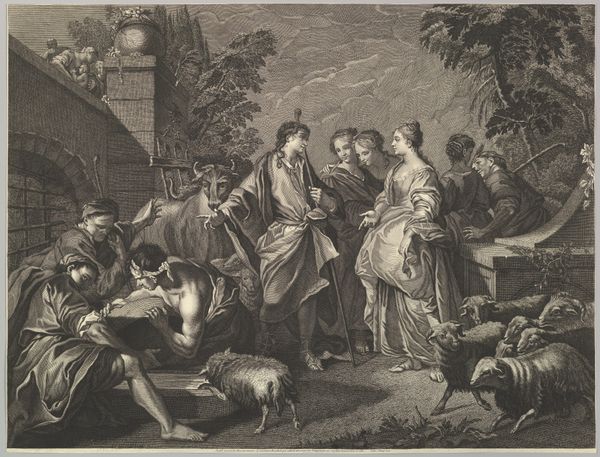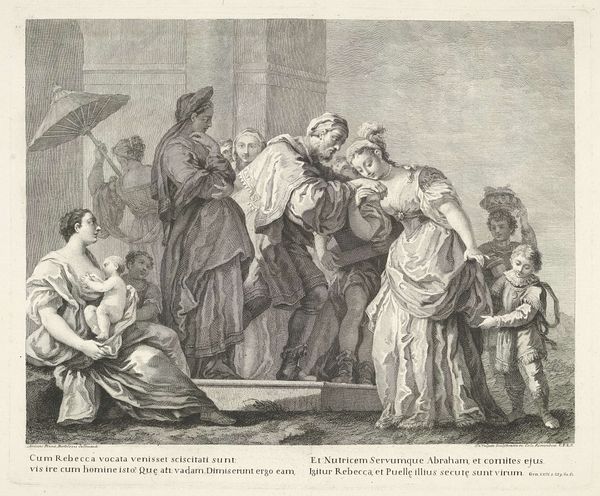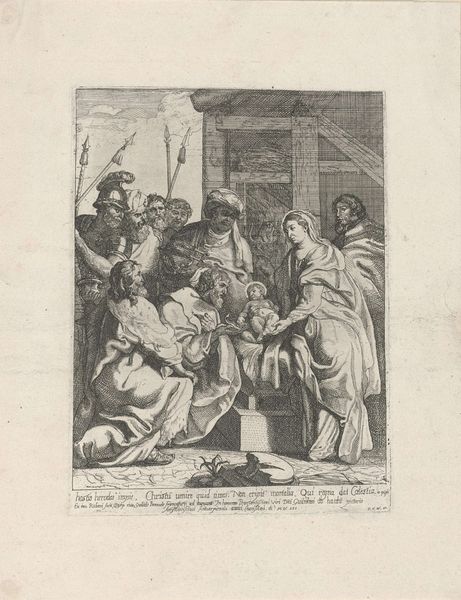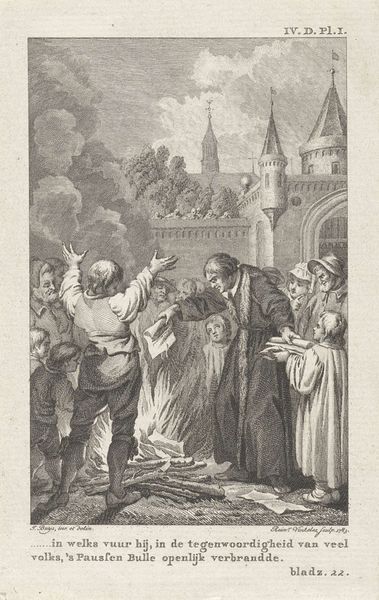
Iphigenia accompanied by Pylades recognises Orestes, whom she is about to sacrifice 1776
0:00
0:00
Dimensions: Sheet: 8 1/2 × 11 9/16 in. (21.6 × 29.3 cm)
Copyright: Public Domain
Editor: So, this etching by Giovanni David, from 1776, is titled "Iphigenia accompanied by Pylades recognises Orestes, whom she is about to sacrifice." It’s intense, visually! All that classical architecture and those draped figures. The moment depicted is filled with dramatic tension. As a student of art, I’m wondering, what's the deeper context here? How do you interpret this scene through a historical lens? Curator: Excellent observation. Beyond the surface narrative, let's consider the sociopolitical landscape of the late 18th century. The rediscovery of classical antiquity heavily influenced art and thought, acting almost like a mirror reflecting contemporary ideas about governance and power. In this image, what do you observe about how power dynamics are presented visually? Are there hierarchies being suggested by placement or gesture? Editor: Hmm, Iphigenia stands tall, almost regal, despite what seems like a moment of vulnerability. Orestes looks desperate, even chained. So does that illustrate how societal roles can trap people in terrible circumstances? Curator: Precisely! This piece prompts reflections on how individuals navigate predetermined roles. Furthermore, consider where such a work would typically be displayed. Was it meant for private enjoyment within a noble home, or might it have been publicly displayed? Knowing the answer can influence our perception of its intended audience. Editor: I'm thinking that showing it publicly might be a challenge to societal expectations. This kind of highlights tension between personal emotion and political constraints within families and societies. Thank you, seeing the wider history helps a lot! Curator: Absolutely. The power of historical context transforms our viewing. By understanding the art within it’s setting, it transforms our interpretation, even today.
Comments
No comments
Be the first to comment and join the conversation on the ultimate creative platform.

